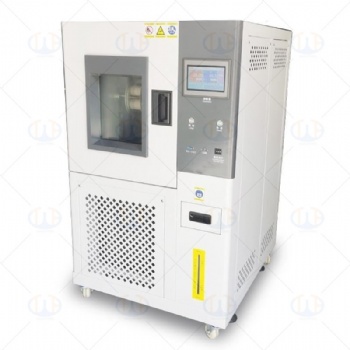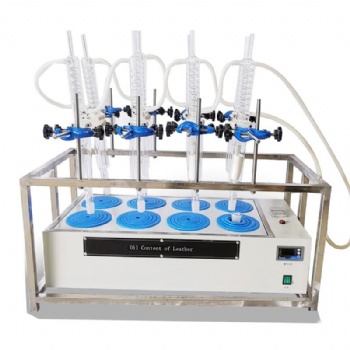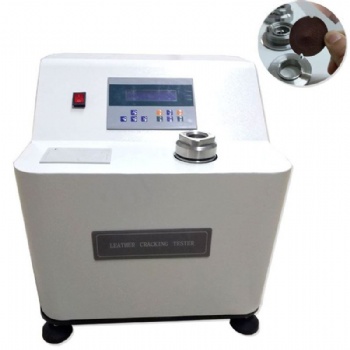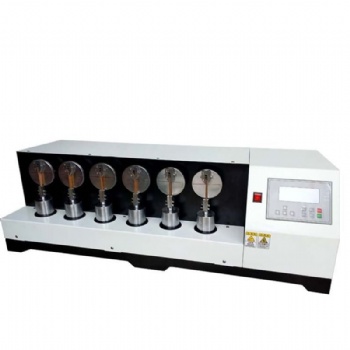News
Exploring the Leather Reciprocating Friction Color Fastness Testing Machine
Exploring the Leather Reciprocating Friction Color Fastness Testing Machine
In the leather industry, ensuring the quality and durability of materials is paramount. One critical aspect of this quality assurance is color fastness, particularly in relation to friction. The Leather Reciprocating Friction Color Fastness Testing Machine is a vital tool for assessing how well leather maintains its color under conditions of wear and friction. This blog delves into the importance of this testing machine and the relevant standards that govern its use.
What is the Leather Reciprocating Friction Color Fastness Testing Machine?
This Leather Reciprocating Friction Color Fastness Testing Machine simulates the rubbing or friction that leather surfaces endure in everyday use, helping manufacturers evaluate the color fastness of their products. By subjecting leather samples to controlled friction, the machine measures how much color transfer occurs, providing insights into the material's durability and quality.
Key Features
1.Automated Operation: Many models offer automated testing cycles, ensuring consistent results and reducing human error.
2.Versatility: The machine can accommodate various leather types and finishes, making it suitable for diverse applications in fashion, upholstery, and accessories.
3.User-Friendly Design: With digital interfaces and clear settings, operators can easily program tests and interpret results.
4.Controlled Testing Conditions: The ability to adjust speed, pressure, and duration mimics real-world wear, providing realistic data on color retention.
Relevant Test Standards
To ensure the accuracy and reliability of results, several international standards govern the testing process for color fastness to rubbing in leather:
1.ISO 11640: This standard specifies methods for assessing the color fastness of leather to dry and wet rubbing. It outlines the procedures for preparing samples, conducting tests, and evaluating results.
2.AATCC 8: The American Association of Textile Chemists and Colorists (AATCC) method for color fastness to crocking involves rubbing a standardized white cloth against the leather sample. This method is crucial for textiles but often referenced in leather testing as well.
3.ASTM D5053: This standard outlines test methods for evaluating the color fastness of leather to rubbing, specifying the test conditions and procedures for both dry and wet tests.
4.EN 15184: A European standard that provides guidelines for testing color fastness to rubbing in leather and other materials, ensuring compliance with industry requirements.
Testing Procedure
The testing process typically involves the following steps:
1.Sample Preparation: Leather samples are cut to specified dimensions and conditioned according to standard requirements.
2.Setup: The machine is configured with the appropriate settings for speed, pressure, and the number of cycles.
3.Testing: The friction test is performed, with the leather sample rubbed against a standardized abrasion cloth for a specified duration.
4.Evaluation: After testing, the color transfer is assessed using visual inspection or color measurement instruments, comparing the test sample against a reference to determine the degree of color fastness.
Importance of Testing
Color fastness to friction is critical for leather products, as it directly impacts their aesthetic appeal and usability. Poor color fastness can lead to customer dissatisfaction, product returns, and brand reputation issues. By using the Leather Reciprocating Friction Color Fastness Testing Machine, manufacturers can ensure that their products meet industry standards and consumer expectations.
Conclusion
The Leather Reciprocating Friction Color Fastness Testing Machine is an indispensable tool for quality control in the leather industry. By adhering to established test standards, manufacturers can ensure their products are durable and maintain their visual appeal under friction. Investing in such testing machinery not only enhances product quality but also bolsters brand integrity in a competitive marketplace. As the demand for high-quality leather goods continues to grow, the importance of rigorous testing processes cannot be overstated.
100kn digital compression testing machine, 2000kn digital compression testing machine, 600kn digital compression testing machine, charpy impact test low temperature chamber
Categories
Contact Us
- +86-18615632092
- wtbequipment@hotmail.com
- sophie-tester
- +86-18615632092




 售前客服
售前客服